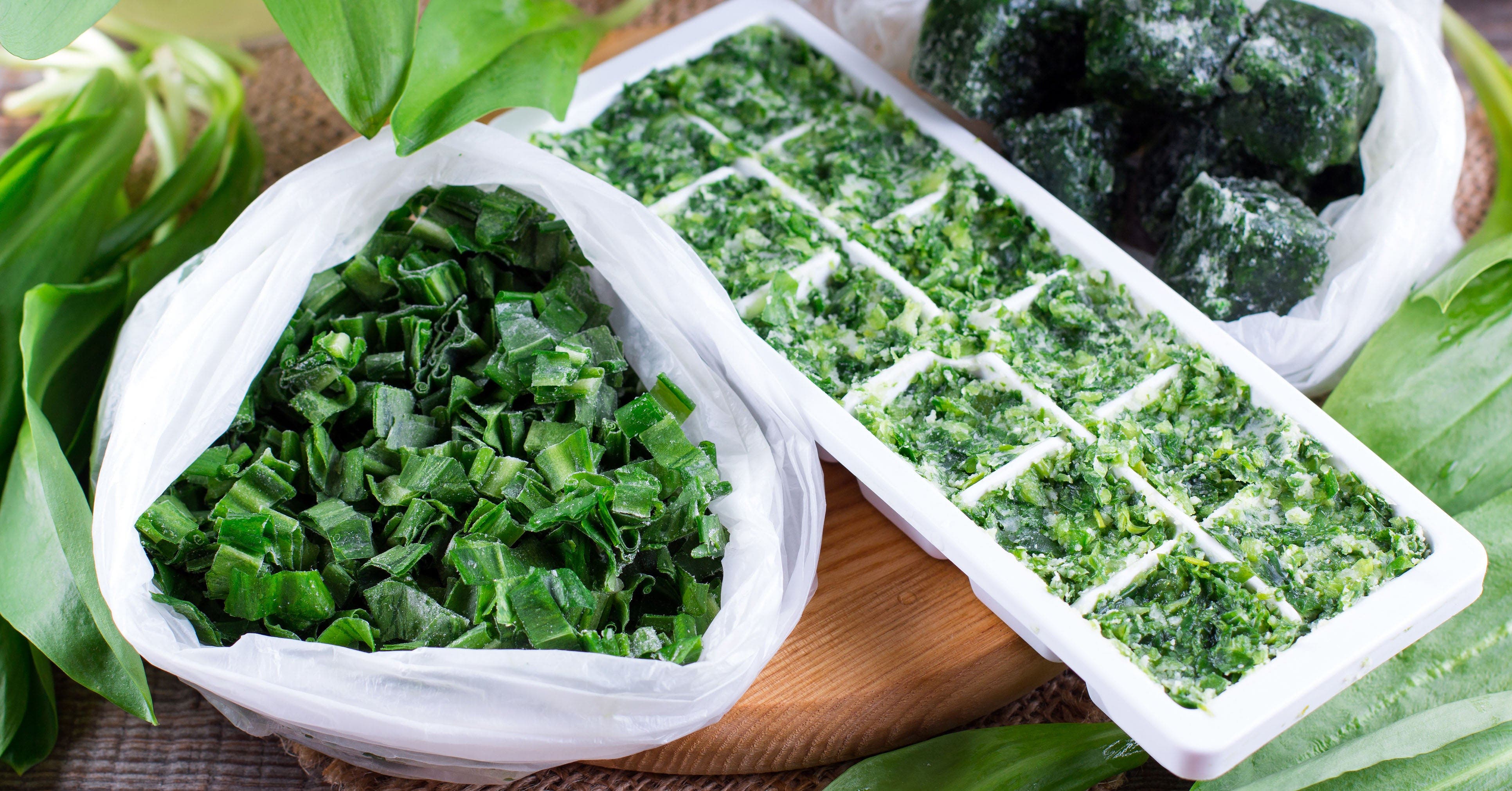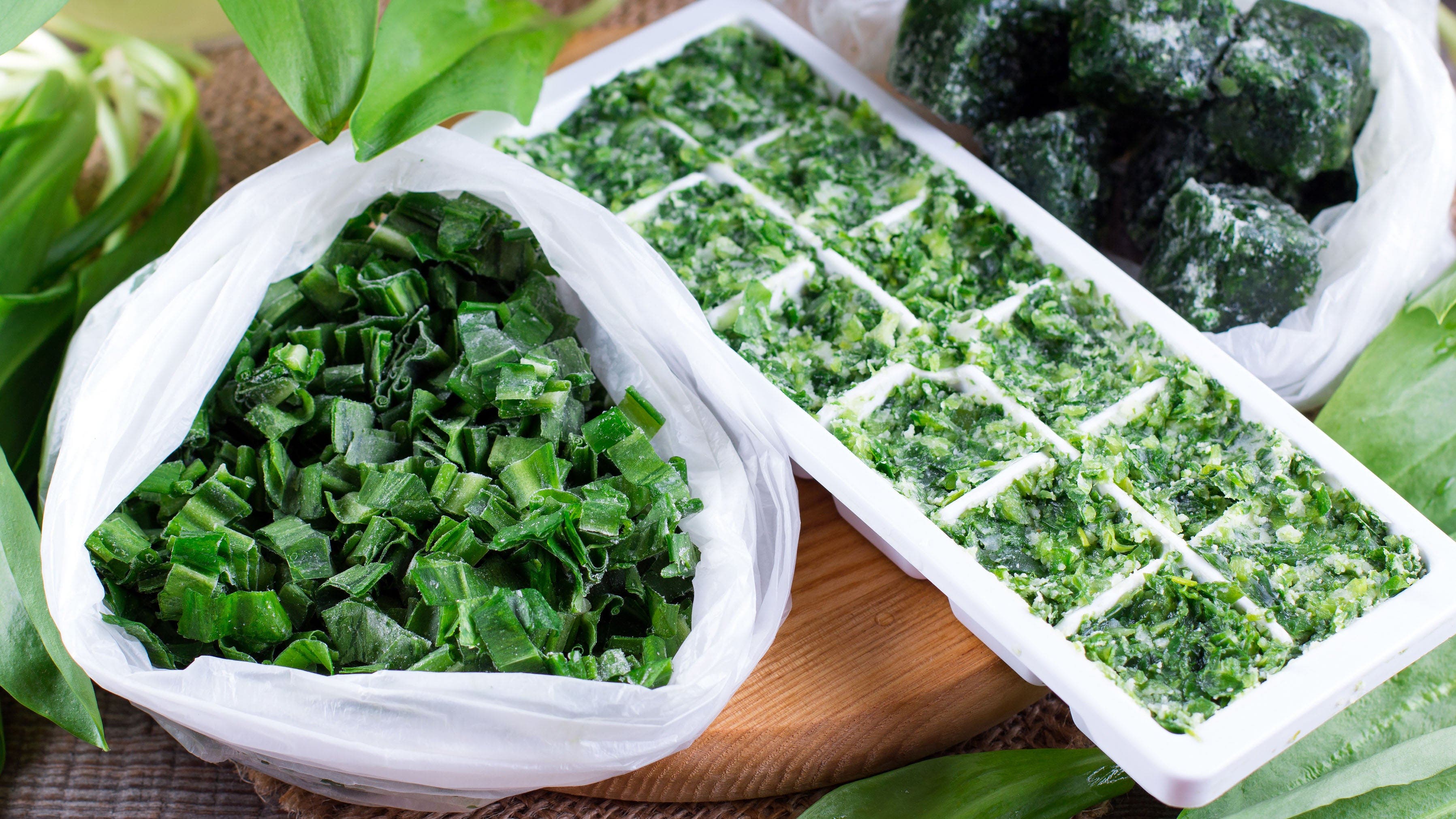Can You Freeze That?


If you have a freezer attached to your fridge, or a second freezer used only for extra food storage, you might sometimes find yourself wondering, “can I freeze that?” It’s one thing to stock a freezer with store-bought bags of prepared bags of fruits and vegetables, but what about that bunch of fresh rosemary you might need later on? Or the half-dozen eggs you haven’t gotten around to using yet? This guide tells you exactly what (and what not to) store in the freezer as well as offering helpful instructions on preparing food for optimal freshness and longevity.
Need some reminders about keeping your freezer food safe? Check out this detailed article full of important freezer safety tips before reading the tips below.
Freeze these common staples
There are two methods for successfully freezing fresh herbs: the wet method and the dry method. To freeze fresh herbs using the wet method, finely chop the herb of your choice (removing any woody stems) and pack into ice cube trays. Cover the minced herbs with water or olive oil and freeze, popping the frozen herbs out of the tray and storing the blocks in a resealable bag. For the dry method, choose hardier herbs such as rosemary or thyme. Wash the herbs, allow them to dry completely and then freeze in a resealable bag for up to 6 months.
Freezing fully-cooked grains and legumes in single- or double-serving sizes means you’re never far from a satisfying meal that’s high in dietary fibre and other essential nutrients. Prepare grains or dried legumes as usual, spreading the cooked food over the surface of a baking sheet to prevent clumping as it cools (this step also helps to speed up the cooling process.) Once the grains and/or legumes are at room temperature, store in resealable bags or small containers for up to 6 months. Defrost in the fridge overnight or in the microwave right before using.
Prepare hardy greens, such as kale, Swiss chard and spinach (not baby spinach), for freezing by carefully washing them, removing tough stems and blanching in boiling water for 2 to 3 minutes. Using a slotted spoon, remove the greens from the water, giving the greens time to drain and cool before packing them into resealable bags or containers. Once frozen, the greens can be stored in the freezer for up to 12 months.
For ultra-fresh baking supplies, consider storing certain perishable baking items (such as flour, butter, wheat germs and nuts) in the freezer for up to 6 months. Store in the original packaging or decant into smaller containers and resealable bags to fit your freezer space.
Surprising foods you can freeze
Although whole eggs-in-the-shell shouldn’t be frozen (see note below), eggs that have been lightly beaten to incorporate the yolk and whites can be frozen with great success for up to 12 months. Hard-boiled egg yolks can also be individually frozen for up to 3 months, defrost the yolks in the fridge as needed to garnish salads or soups.
Firm and extra-firm tofu are rare examples of food items that actually improve in texture after spending some time in the freezer. Tofu that is packaged in plastic can be added to the freezer as is for up to 3 months; if the tofu comes in brine it should be removed from the liquid and dried off, pressed and then double wrapped in plastic. Thawed tofu has a uniquely chewy texture, and is especially delicious when crumbled up and added to scrambles and casseroles.
Shredded firm cheeses with a low moisture content such as Parmigiano-Reggiano and Pecorino Romano freeze well for up to 8 months and can be stored in a freezer bag to grab as needed.
Keep bread as fresh as the day it was brought home from the store (or the day it was made) by storing it in the freezer, sliced, for up to 3 months. To defrost, simply toast the bread from frozen or warm in the oven until soft.
Avoid freezing these foods
Creamy dairy products such as sour cream, yogurt, kefir, skyr, and custard will separate and become watery when thawed.
Spreadable or runny cheeses such as cream cheese, cottage cheese, fresh goat’s milk cheese, ricotta, feta, soft cheese (such as brie or camembert), sliced cheese, and semi-soft cheese (such as cheddar, havarti, Swiss or gouda) aren’t suitable for freezing. Almost all cheeses that have a high moisture content will separate and experience textural changes once defrosted.
Mayonnaise and aioli will separate and break into clumps once thawed.
Watery fruits and vegetables like cucumber, melon, celery, lettuce (and other delicate greens), radishes, raw potatoes, green peppers, and citrus slices shouldn’t be frozen. After being in the freezer, these fruits and vegetables will become limp and watery with a noticeable change in appearance and texture.
Whole eggs in the shell will expand once frozen, causing the yolks to solidify and the shells to eventually crack or even explode.
Sauces thickened with cornstarch, such as gravy, break apart once frozen and defrosted.
Fully-cooked pasta that has been frozen will become soggy and is likely to disintegrate into sauces and soups once thawed.
